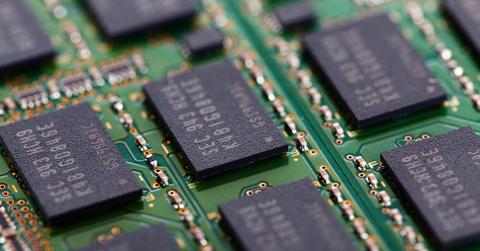Is Micron a Cheap Stock at Its Current Price?
Micron Technology (MU) is a cyclical stock governed by memory prices, which are driven by demand and supply forces. If we look at Micron stock’s valuation, it looks like a cheap stock with strong growth potential. However, the cyclical nature of the stock makes valuing it difficult.
Jun. 24 2019, Updated 5:18 p.m. ET

Micron’s stock valuation
Micron Technology (MU) is a cyclical stock governed by memory prices, which are driven by demand and supply forces. If we look at Micron stock’s valuation, it looks like a cheap stock with strong growth potential. However, the cyclical nature of the stock makes valuing it difficult.
A stock’s value is determined by looking at its current price and its fundamentals, such as sales and EPS, to understand whether investors have priced it according to its earnings potential. Price ratios are used to value a stock.
How does the PE ratio work?
The most common price ratio is the PE ratio, which tells us the amount investors are willing to pay per dollar of a company’s EPS. A forward PE ratio is based on analysts’ EPS estimates for the next four quarters.
A PE ratio is determined by dividing a stock’s price by its EPS. A company’s PE ratio falls if its stock price falls while its EPS remain flat—a good scenario for long-term investors wanting to buy a stock, as a lower PE ratio makes it cheap. The PE ratio rises if EPS fall while a stock’s price remains constant, making the stock expensive. This is a normal scenario. The PE ratio remains constant when both the stock price and EPS fall, as is the case with Micron.
Valuing Micron’s stock using PE ratio
Micron’s EPS are expected to fall 53% sequentially in the quarter that ended on May 31, during which its stock price fell 20%. Hence, Micron’s PE ratio has been more or less stable at 3.2x since November 2018. A low PE ratio doesn’t make Micron a cheap stock, as its EPS are also falling. Micron’s PE ratio was 0x in 2016, as it reported negative EPS.
Micron’s PE ratio of 3.2x is close to pure-play memory chip maker SK Hynix’s PE ratio of 3.4x. Other memory chip makers Samsung and Intel have PE ratios of 8.3x and 10.2x, respectively, but they earn revenue from several markets, with memory being just one. Hence, it’s not helpful to compare Micron with Samsung and Intel.
When valuing Micron, investors should look at its PE ratio and its EPS growth to determine whether its stock is cheap or not. At present, Micron is not a cheap stock. Its PE ratio could fall further if its EPS fall alongside memory prices.
